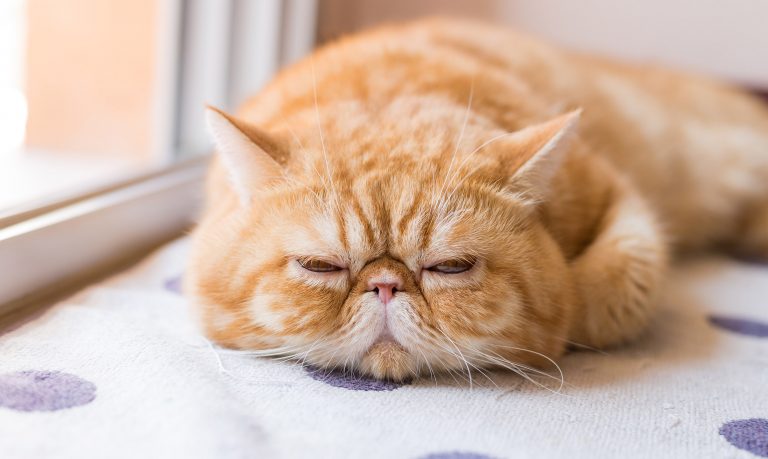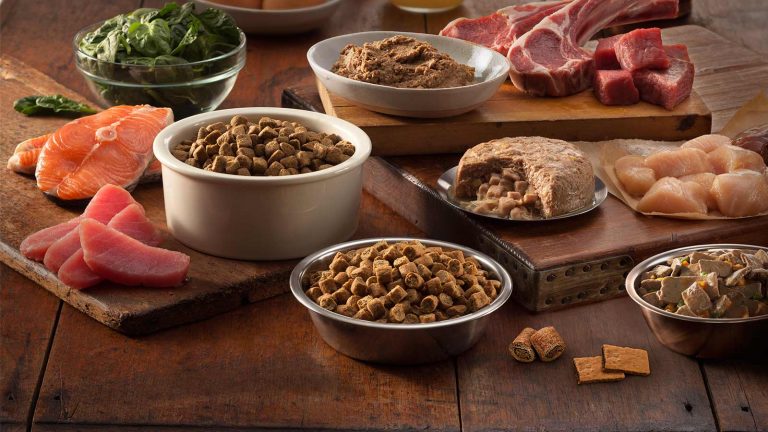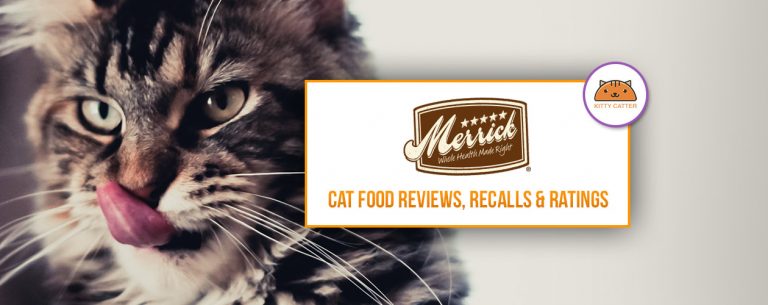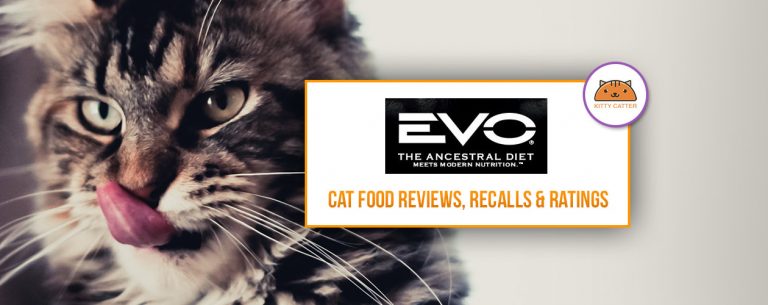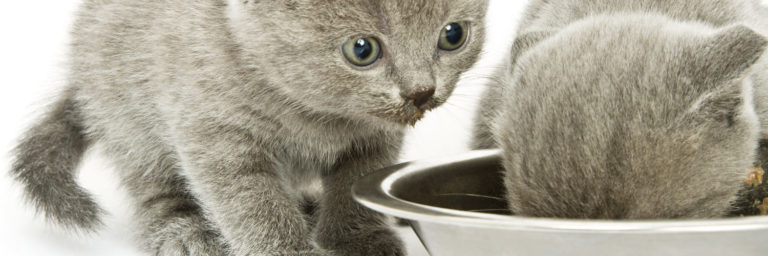Feeding Cats a Raw Diet
Contents of Article
As a cat owner, one of your biggest responsibilities is providing for the nutritional needs of your furry friend. In order to construct a healthy and nutritious diet for your cat, however, you need to understand the basics of feline nutrition. Cats are obligate carnivores which means that they have a biological need to eat meat – it also means that they are physically incapable of digesting large amounts of carbohydrate. A cat’s digestive system is designed to process animal products – it is that simple.
Because many commercial cat food diets are heavy on the carbohydrates, many cat owners consider making the switch to a raw food diet. Raw food diets are available in commercial form from certain specialized pet food manufacturers and they can also be made at home. Feeding your cat a raw food diet is very different from feeding him dry kibble or even canned food. No matter what you are feeding your cat, you need to make sure that his minimum requirements for essential nutrients are being met and that can be challenge with homemade diets.
If you are considering switching your cat to a raw food diet you need to take the time to learn everything you can before you make your choice. Both commercial and homemade raw cat food diets are more expensive than kibbles and canned food, plus they are not as easy to come by. Raw food diets for cats do, however, provide some very significant health benefits over traditional foods. In this article you will learn everything you need to know in order to make an informed decision regarding the switch to a raw food diet. If you do choose to go raw, you will also learn the important components of a raw food diet for cats, tips for transitioning onto the new diet, and a sample recipe for a homemade raw cat food diet. These are all things you will need to review in order to decide whether raw food really is the best option for you and your cat.
What is a Raw Food Diet for Cats?
A raw food diet for cats is simply one that approximates the type of diet your cat would follow in the wild. If you are familiar with popular pet food brands like Acana and Orijen you may be familiar with the term “Biologically Appropriate Diet” – for Blue Buffalo, the term is “Natural Evolutionary Diet”. All of these terms simply mean that the food is formulated in such a way that it mimics the content and nutritional proportions of a wild cat’s diet. A natural diet for wild cats is made up of fresh animal meat as well as the skin, cartilage, and bone. Natural diets for cats do contain minimal carbohydrate, generally in the stomach contents of whole prey. Therefore, a raw food diet for cats will be high in protein with moderate levels of animal fat and low levels of digestible carbohydrate.
When it comes to raw food diets for cats there are two main options – homemade cat food or commercial cat food. Homemade cat food needs to be carefully formulated to ensure that all of the cat’s nutritional needs are being met. Because it is challenging to do this without a recipe designed by a veterinarian or animal nutritionist, many cat owners choose commercial raw food diets. There are a few pet food manufacturers which sell fresh, raw cat food but these foods are not available in all areas. Some of the best commercial raw cat food products are made by the following manufacturers:
- Answers Pet Food
- Bravo, LLC.
- Honest Kitchen
- Natural Pet Pantry
- Nature’s Variety Instinct
- Northwest Naturals
- Primal Pet Foods, Inc.
- Rad Cat Raw
- Raw Advantage
- Small Batch Pets
- Stella & Chewy’s
- Steve’s Real food
- Vital Essentials
Pros and Cons of Raw Diets for Cats
Before you decide whether a raw food diet is right for your cat, you need to understand both the pros and cons. The main benefit of raw diets for cats is, of course, that it more closely approximates the cat’s evolutionary diet than the typical commercial dry food or canned food diet. Commercial pet foods are cooked in a process that, unfortunately, has the potential to destroy or alter a significant level of the product’s nutritional value. Cooking commercial pet foods makes them easier to package and gives them a longer shelf-life, plus it enables the manufacturer to shape the product into kibbles to ensure palatability for cats. With raw food diets, no cooking is involved so the ingredients retain their original nutritional value the whole way through.
Another benefit of raw cat food diets is that they are typically made with natural, unaltered ingredients. When your cat receives a natural diet of quality ingredients he may enjoy improved immune function, regulated digestion, improved skin and coat health, reduced or eliminated halitosis (bad breath), increased energy levels, relief from food allergies, an increased lifespan, and other potential benefits. When properly formulated, a commercial cat food diet can provide many of these benefits as well but not to the same degree as a natural raw food diet. Commercial cat food diets are also more likely to contain artificial ingredients such as fillers, flavors, colors, dyes, and preservatives.
The fact that raw cat food diets are made with all-natural ingredients ensures high-quality nutrition, but it does introduce a few challenges. For example, raw cat foods cannot be stored at room temperature like kibbles – they must be kept frozen or refrigerated. Frozen raw foods can half a shelf-life of several weeks or months, but once they are thawed they generally last for no more than 3 to 5 days. Another benefit of commercial cat food diets is that they are typically less expensive than raw food diets. A large bag of high-quality cat food that might last your cat a full month could cost around $20, depending on the brand. If you divide it out, you are left with an average daily cost around $0.60. The average raw food diet costs ranges from $1.00 to as much as $3.50 per day depending on the size of your dog and the quality of ingredients (organic is more expensive).
One of the main reasons many cat owners make the switch to homemade raw food diets is the fact that they can control the ingredients that go into the food. With a commercial cat food diet you may be able to choose from a variety of different flavors and recipes, but there are always going to be a few ingredients thrown in that you cannot control. These ingredients may vary from one manufacturer to another and even among different recipes from the same manufacturer. When you make your own cat food you have the option to cater the recipe to your cat’s individual preferences and you can make adjustments based on specific dietary or medical needs. In the end, it is always easier to buy a bag or can of cat food off the pet store shelf but it is not always the healthiest option.
With raw food diets it is also important to consider some safety concerns. One of the main concerns is in regard to bacterial and parasitic contamination which can be an issue with fresh ingredients like raw meat and eggs. Animals typically have an increased ability to tolerate a certain degree of bacterial contamination but handling raw ingredients improperly can put you can your family at risk for Salmonella, E. coli, and other food-borne diseases. Some people who oppose raw food diets for cats also mention the risk of gastrointestinal obstruction and dental injury due to the consumption of bones. Some of the risk can be mitigated by feeding raw rather than cooked bones because they are generally softer and easy to digest. As a whole, issues with gastrointestinal obstruction or perforation are fairly rare on the raw cat food diet but they can happen. It is very important that if you use raw bones in your homemade cat food diet that they be soft, meaty bones that will not splinter.
The Components of a Raw Food Diet for Cats
There is no one raw food diet for cats. There are variations among commercial raw food diets for cats just as there are different kinds of homemade raw food diets. When it comes to commercial raw food diets there are three main options: raw fresh, raw frozen, and freeze-dried raw. Many commercial cat food manufacturers also offer a combination option of traditional kibbles supplemented with freeze-dried raw bits. In terms of storage and shelf-life, freeze-dried raw foods are similar to kibble – they do not necessarily need to be refrigerated or frozen. They also retain some of the nutritional benefits of raw food because they are dehydrated, not cooked – they do not lose as much of their nutritional value as fully cooked kibbles do.
Just as commercial raw food diets come in different forms, so do homemade raw food diets for cats. Some raw diet feeders follow a purist philosophy when it comes to recipes, using only raw meat, bones, and eggs – they do not use any grains, fruits and vegetables. Other raw diet feeders choose to include certain cooked grains as well as fruits and vegetables to help round out the nutrient content of the product – they may also include certain dietary supplements to ensure complete and balanced nutrition. Those who follow a purist philosophy for raw food feeding do not worry as much about whether each individual meal is nutritionally balanced. Instead, they feed their cat different recipes over the course of a week or month (this is called rotationally feeding) with the understanding that the diet will provide balanced nutrition over time as a whole, if not each individual day.
If you have ever looked into commercial raw food diets for cats, or even high-quality kibbles, you may have come across the term “natural prey model”. This term is simply used to describe the natural diet of wild cats which comes from wild prey – it includes all parts of the animal such as the meat, bones, and organs. Raw cat food diets generally follow a natural prey model that consists of between 80% to 85% meat (this includes muscle meat as well as skin, fat, tendons, sinew, and cartilage). The remaining 15% to 20% is made up of 10% edible bone and 5% to 10% organ meat, at least half of which is liver. This is the model strict raw diet feeders typically follow, using different kinds of meat and bone at every meal to ensure nutritional variety and consummate nutritional balance.
When it comes to the actual ingredients used in raw homemade cat food, there is a great deal of variety available. Poultry such as chicken and turkey tends to not only be the most digestible and nutritionally balanced for cats, but it is also one of the most economically sensible options. Chicken breasts and thighs may be a little more expensive but you can find wings, carcasses, organs, and necks for free or very cheap from a local butcher. Fish is very important to include in a raw food diet for cats because it contains essential fatty acids that help to support immune system health as well as healthy skin and coat. Red meats like beef, veal, and lamb are a little more expensive and may trigger food allergies in some cats, though they are a good addition in terms of variety for cats that can tolerate it. Beef liver and beef heart are particularly nutritious, though all organ meats are good additions for raw homemade cat food diets. You may also want to include eggs as an additional source of protein but try to avoid the whites and only feed the yolks on occasion. Egg whites contain a protein called avidin that may interfere with your cat’s uptake and absorption of B vitamins. Meaty bones contain nutrient-rich marrow as well as calcium, digestive enzymes, and various other nutrients.
One thing you may be wondering about in regard to raw cat food diets is dietary fiber. While some dietary fiber may be necessary to support healthy digestion, many commercial cat food diets contain too much fiber or it comes from grains and other ingredients that your cat may not be able to digest properly. Chronic diarrhea is a common problem in cats, but it is most often not due to inadequate fiber content in the diet – it is more commonly related to highly processed, low-quality foods. In many cases, switching the cat to a high-quality product, even if it is low in carbohydrate, is enough to solve the problem. Grains and other high-fiber ingredients are simply not necessary in the diet for a cat which is why you don’t see these ingredients in many raw cat food diets.
Commercial raw food diets for cats are usually formulated a little bit differently than homemade raw diets. Raw food rolls and patties are becoming increasingly popular among cat owners because they are easy to feed – you simply slice off a piece, let it warm to room temperature, then offer it to your cat. These patties can be made from a variety of animal ingredients and some recipes do include grains and/or various fruits and vegetables. What really sets these options apart from homemade raw food diets, however, is that the ingredients are usually ground together into a cohesive product. Some raw diet feeders are heavily opposed to grinding raw foods for cats because chewing whole foods allows the cat to use its teeth as nature intended and it can also help to improve oral health.
Transitioning Onto a Raw Food Diet
Any time you decide to make a change to your cat’s diet you need to make the change slowly. Changing your cat’s diet too quickly can lead to gastrointestinal upset – it is also possible that your cat will simply reject the new food if he doesn’t get used to it slowly. Transitioning onto a raw food diet is particularly challenging for some cats because the texture is so different from dry foods. In many cases kittens take to raw foods very easily but older cats may need time to get used to the change. Your transition strategy may vary depending on your cat’s current diet. If you are feeding your cat dry food, you may need to use a different strategy than if your cat is only eating wet food – wet food is a little closer to raw food in terms of texture and palatability.
If your cat is currently eating an all-dry food diet, you may want to start by transitioning him onto a high-quality, grain-free canned food before making the switch to raw food. Start by serving your cat’s dry food on a flat plate with a side portion of high-quality, grain-free wet food. Follow this strategy for a week or so, as long as your cat is eating both foods. If your cat refuses the wet food, try a different recipe. Some cats prefer the taste of low-quality canned foods so you may even need to start off with that until your cat gets used to eating wet food, then you can transition onto a higher quality formula. After a week, serve your cat a larger portion of wet food in a flat plate with some of the dry food sprinkled on top. If your cat is still struggling, try adding a little bit of meat baby food on top of the canned cat food – most cats accept this.
Eventually, once you have transitioned your cat entirely onto the wet food you can start working on the transition to raw food. Just be sure that your cat is consistently eating the wet food before you introduce a new change. Try out some chopped chicken or turkey for the first attempt – chicken liver is also an excellent option. Make sure to serve the food warm, not cold, but do not microwave it! Place the food in a zippered plastic bag and soak it in warm water for 10 to 15 minutes until it is close to body temperature. Start with a similar strategy to the canned food transition by placing the cat’s canned food on a plate with a little raw food next to it. Continue this for a week then actually start mixing the raw food into the canned food. As long as your cat accepts it, continue doing this for several weeks, gradually increasing the amount of raw food as you decrease the amount of canned food. Start off with the raw foods being very finely chopped and work your way up to bigger pieces that your cat has to actually shred with his teeth.
Once your cat is consistently eating raw food like chicken or turkey you can work on introducing variety. You may also need to work with your cat to get him used to eating raw meaty bones. Many cats enjoy chicken and turkey wings but, for some cats that are used to canned food, it may take some time for them to build up the jaw muscles to be able to chew through bone. Once your cat is used to chewing larger pieces of boneless meat, introduce small pieces of meaty bone like a small chicken wing. If your cat needs a little bit of encouragement, try rolling the bone in brewer’s yeast, bonito flakes, or even parmesan cheese. After your cat starts to eat the chicken wings you can start to include other meaty bones such as pieces of cut-up Cornish game hen, pieces of rabbit carcass, or small birds.
If you are transitioning your cat onto a commercial raw food diet, your process might be a little different depending on the type of raw food product you choose. For raw food products that are shaped into a roll or patty, you may need to chop the food up and mix it into some canned food just as you would with fresh meat. Remember, you need to warm up the raw food before offering it to your cat but only warm up as much as you are going to feed at one time – keep the rest of the food in the freezer or refrigerator to keep it fresh. Any fresh cat food that is thawed should be used within 3 to 5 days (check the label for specific instructions) and uneaten portions should be removed from your cat’s bowl after about an hour or so. While your cat is getting used to the new food you may end up throwing a lot of it away, so be prepared for that.
Raw Diet Feeding Tips for Cats
One of the challenges with a raw food diet for cats is deciding how much to feed. For kittens, you should plan to feed three or more small meals throughout the course of the day. The kittens will eat as much as they need to sustain growth and development, so you generally don’t have to worry about overfeeding. For adult cats, however, you should limit it to one larger or two smaller portions per day – some raw diet feeders alternate between once a day feedings and twice daily feedings to approximate the eating habits of wild cats. If you feed your cat one meal a day it will be larger than if you feed two meals – it can sometimes help with your cat’s digestion if you alternate between the once or twice daily feedings.
As a general rule, your cat should be eating about 2% to 3% of his bodyweight in food daily. Because most cats weigh less than 20 pounds, they may only be eating about ¼ pound of food per day. You may have to adjust the meal size for your cats depending on their size. For larger cats, you may be able to divide the total daily portion into two meals but smaller cats may not be able to eat as much in one sitting. The best thing you can do is start by feeding 2% of your cat’s bodyweight divided into two or three portions a day and keep an eye on her weight and shape. If your cat starts to look too lean, increase her daily portion to 3% of her bodyweight. If your cat starts to gain too much weight, cut back a little bit and check with your veterinarian to make sure there isn’t a secondary medical condition that could be causing your cat to gain weight.
Not only do you need to think about how much you are feeding your cat, but you should also be mindful of when and where you are feeding your cat. Especially when you are transitioning your cat onto a raw food diet you need to stick to a schedule – having a routine in place will help your cat to make the transition more smoothly. Most cat owners choose to feed their cats in the morning and in the evening – this allows them to digest one meal fully before they are given the next. It is generally a good idea to feed your cat in the kitchen so you can keep an eye on him while he eats. Offer your cat his food on a plate or in a bowl but consider keeping it on a plastic placemat. Many cats like to drag the food out of the bowl to eat it and this will save you some cleanup.
Sample Homemade Raw Food Diet
If you have decided that you want to feed your cat a homemade raw food diet, you need to start with a quality recipe. While your cat is making the transition onto raw food it is important that his nutritional needs are still being met, so a balanced recipe is a must. After your cat gets used to eating raw food you can start to experiment a little bit more. To help you get started with a homemade raw diet for your cat, consider the following recipe as a starting point:
Ingredients:
- 2 ¼ pounds chicken thighs, bone and skin included
- 7 ounces chicken hearts
- 5 ounces chicken liver
- 1 cup water
- 2 raw egg yolks
- 2,000mg taurine
- 2,000mg raw salmon oil
- 100mg Vitamin B complex
- 400 IU Vitamin E
- ¾ teaspoons iodized salt
Instructions:
- Remove the skin from half of the chicken thighs and discard about 20% of the bones.
- Rinse the meat ingredients in cool water then cut it into chunks.
- Whisk the egg yolks, salmon oil, and supplements into the water in a large bowl.
- Toss in the chopped meats and bone then store in lidded plastic storage containers in the refrigerator.
- Leave one container in the refrigerator to use within 3 days and freeze the rest.
Unless you are willing to make the commitment to ensuring that your cat’s nutritional needs are being met with a balanced homemade diet, you should consider a commercial raw food diet instead. Commercial raw cat foods are subjected to the same standards as kibbles and canned foods in terms of meeting AAFCO regulations. Just make sure that the formula you choose is complete and balanced for cats in all life stages.
Importance of Quality in Raw Food Ingredients
When you make the decision to feed your cat a raw food diet you should also decide to choose high-quality over low-quality ingredients. There is no point in feeding your cat a homemade raw food diet unless you choose the best ingredients. Using low-quality ingredients will only put your cat at risk for health problems and that is something you do not want. One thing you need to consider when choosing the ingredients for your cat’s raw food diet is wild versus domesticated prey. The meat you find in your grocery store’s butcher section is most likely domesticated – it may be treated with hormones, antibiotics, and other chemicals to increase growth and to reduce disease. What you may not realize is that the nutrient content and macronutrient ratios for wild versus domesticated meats can be very different.
If you have ever gone hunting, or if you know someone who does, you may already know that game birds like pheasant and quail tend to be leaner then farm-raised poultry like chicken and turkey. The same is often true for game meats like venison. In general, wild animals just tend to be leaner than domesticated animals because they have not been fattened up and they are more active. For example, wild duck contains about 17.4% protein and about 15.2% fat – this compares to a domesticated duck which contains about 11.9% protein and 39.35% fat. Fat is an important part of a cat’s diet because it is the most highly concentrated source of energy available, but it is not more important than protein. Protein contains essential nutrients that you cat needs to thrive and too much fat can put your cat at risk for obesity and other health problems. In the end, it is up to you what kind of ingredients you choose to feed your fat but it is worth considering the benefits of wild, organic, and grass-fed meats versus domesticated meats.
By now you should have a thorough understanding of not only what a raw food diet for cats is, but how to create one for yourself if you choose to. Making the decision to switch to a raw food diet is not a choice that should be taken lightly – it has the potential to drastically improve your cat’s nutrition, but there are also some serious challenges you need to take into consideration. What is right for one cat may not be right for another. Before you make any changes to your cat’s diet, be sure to consult your veterinarian. If your cat is affected by certain medical problems, a raw diet may not be a good idea or you may just need to make a few changes to the diet to ensure that your cat’s needs are being met.

